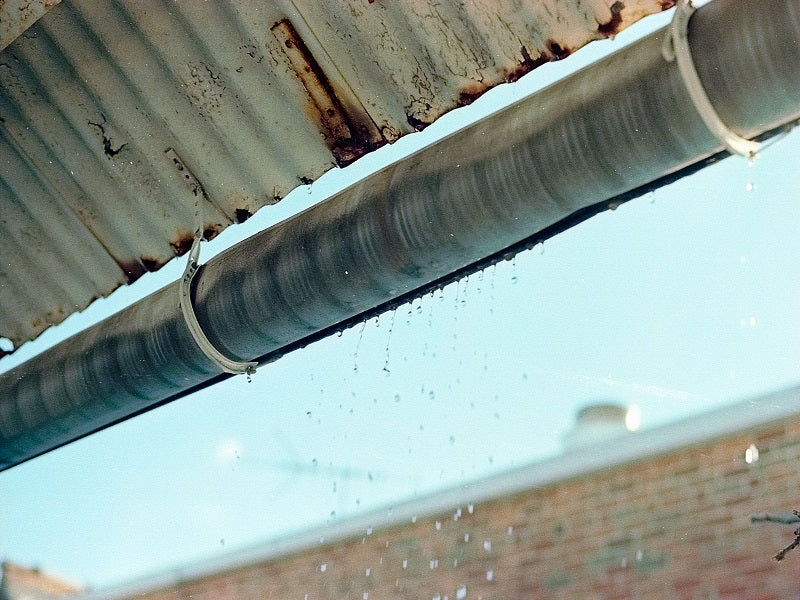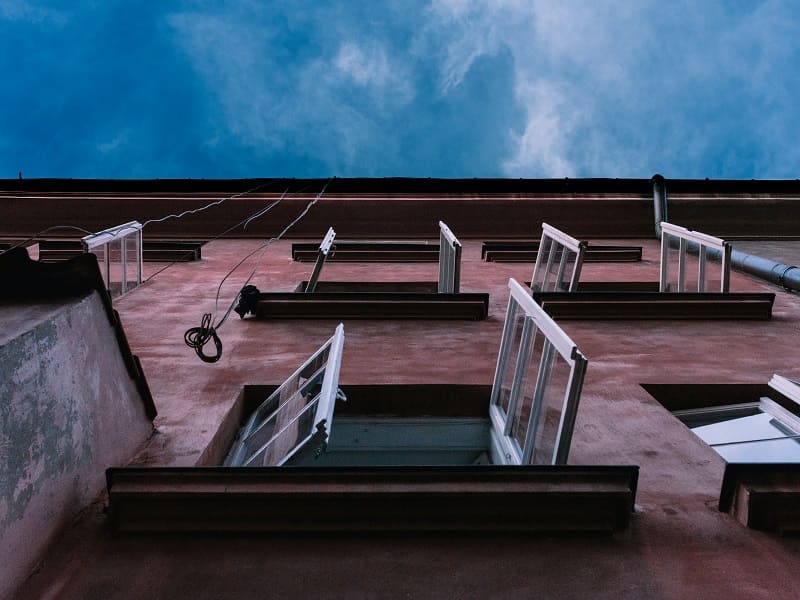How Much Slope For Gutters?
Discover how much slope for gutters to protect your property. Learn regulation, calculate ideal slope, and prevent common issues.
A well-functioning gutter system is critical for safeguarding your property against flooded basements, degraded landscaping, damaged foundations, and other issues caused by misdirected runoff water. Hanging a gutter system looks to be a simple task at first glance; moreover, the actual installation process can be rather challenging if the gutters are to function properly.
One of the most difficult aspects of gutter installation is determining the right slope of the guttering. Gutters look like they parallel the roofline from a distance, but they must be slightly slanted so that runoff water may flow "downhill" to the downspouts. The question arises: how much slope for gutters is necessary to ensure effective water drainage and prevent potential issues? Let’s explore it in this article!
What Is a Gutter Slope?
The slope (also known as the pitch) of the gutters is the extent to which they slant downhill along the course of the water flow. If gutters are not sufficiently sloped, water will merely pool in them and eventually pour over their sides. If the gutters are inclined excessively steeply, their capacity is diminished, and splashover may occur during heavy rains; also, they appear weird to human sight.
Gutter Slope Regulations
So, what is the appropriate slope for your gutters? The slop is typically fixed at one-quarter inch every ten feet of guttering by most contractors. So, if you have a 25-foot stretch of guttering, position the downspout end 5/8 inch lower (1/4 x 2.5 = 5/8) than the other end.
Another crucial criterion to remember is that all guttering must slope toward the nearest downspout. So, if your roofline is 50 feet long and has downspouts at both ends, you need to include a 5/8 inch slope from the middle of the roofline to both ends.
Furthermore, one downspout should be installed for every 30 feet of guttering. In the case of a 50-foot roofline, it would be imprudent to slope the entire length from one end to the other; this would be unattractive and may not work as well. Furthermore, because runoff water does not normally move effectively around corners, it may be necessary to install additional drains where the roofline bends.
How To Calculate The Gutter Slope?
A long string and a string level are the ideal tools for calculating the slope of a gutter run before hanging it. Determine the placement of each of your downspouts first. Then, tie one end of the string to the highest point of the gutter and the other to the location of the downspout. Make sure the string is absolutely parallel to the ground by using a line level.
Then, measure the entire string length and determine how much slope for rain gutters you'll need. In the preceding example of a 25-foot gutter run, the correct slope is 5/8 inch. So, for that project, you need to remove the end of the string (where the downspout will be) and descend it exactly 5/8 of an inch before reattaching it. Remove the string after marking both ends with a pencil. Then, using a chalk line, draw the line where you will put your gutters.
What Is An Ideal Gutter Slope?
The first thing you should do to check for gutter problems is to examine if your system has a sufficient rain gutter slope. Your rain gutters must work with gravity so that surplus water flows downhill towards your downspouts, where it is then sucked down and out onto your yard below. The slope of your rain gutter system should be subtle enough that you won't see it from the street or your driveway but steep enough that water can readily flow down the channels and into your downspout.
Most gutter systems have a conventional slope of half an inch every ten feet. In other words, at each 10-foot mark along the way to the downspout, your gutter system should be a half-inch lower in height.
If you want a gutter system that spans more than 40 feet, make sure it includes a downspout on either end and that the high end begins in the centre of the gutter system. Shorter spans, on the other hand, can slope in a single direction without effect.
Is Gutter Slope Important?
Gutter Slope is undoubtedly one of the most debated topics in the gutter industry, if not the most discussed. Many individuals are adamant about it, yet they are merely using theory to describe how they believe the slope works. Leaf4Go company has been in this market for so many years, and our experiences show that gutter slope is quite crucial. When a slope is done incorrectly, it can result in a lot of annoyance and, in some cases, a lot of damage.
The gutter slope is what permits water to flow properly to the downspout, outlet, and away from your house. The slope allows water to flow at the appropriate rate without competing with new water entering the gutter system. This prevents water from accumulating inside the gutter. A gutter slope can help to avoid debris buildup over time. It can also assist with water capacity issues.
What Issues Can Occur Due To Improper Gutter Slope?
Not Enough Slope
A common issue is the need for a gutter slope. Water would fill faster than it could drain if you installed a lengthy section of gutters with little to no slope because it couldn't find the drain fast enough. In commercial cases, this can be remedied by installing more downspouts. Sometimes, firms construct gutters that are perfectly level but only have a lot of downspout drains for show.
This system would also function in a domestic setting, but it is not suggested. The home's aesthetics are quite essential. Putting downspouts everywhere is not a good idea. It might make the house appear quite trashy. Downspouts are typically located at a home's corner. Most individuals try to avoid putting them in front of their houses. The corners and toward the end or around the sides of the back of the home are ideal locations for downspouts to add curb appeal.
Sloping Gutters Away From Outlets
Another issue is slanted gutters away from the downspout. This can result in mould and the accumulation of trash and bugs. When mould, algae, and other organic stuff begin to accumulate, you will almost certainly need to hire an outside cleaning service to remove it. During a rainstorm, the natural gravity of the water will cause it to flow in the opposite direction of the downspout. If it fills up sufficiently, some water will drain. However, gravity will be fighting the water flow the entire time, with the water seeking the low point opposite the drain or exit.
Too Much Slope
Too much pitch might also be problematic. If the water is pitched 1 inch higher than 10 feet, the capacity inside the end is just two to three inches. That is high, and you will have a modest overflow potential at the end.
Water splashing can occur when water flows a long distance in heavy rain. This is likely to happen when it strikes the end cap or stops at the outside or inside corners when the flow of water changes direction. Overpitching can cause the water to travel too quickly and splash over.
Final- Thoughts
Gutter Slope is a technique for controlling water flow. It is critical to use the correct flow or the correct slope. Slope your gutters sufficiently to allow for adequate flow but not so much that it looks unsightly. Only pitch them as much as necessary, and utilize the right number of downspouts where possible.




Leave a comment
This site is protected by hCaptcha and the hCaptcha Privacy Policy and Terms of Service apply.